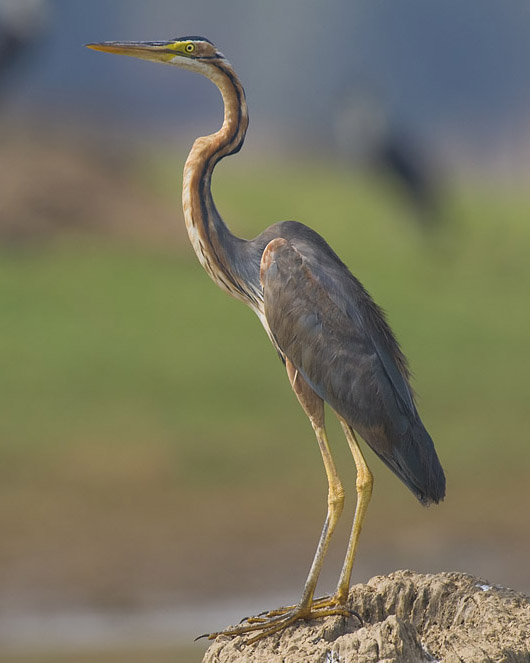Facts About Purple heron
The purple heron is a striking wading bird found across Africa, Europe, and Asia. Though it resembles the grey heron, it is slightly smaller, more slender, and has darker plumage. This bird thrives in habitats with dense vegetation near water, especially reed beds, and has a diverse diet that includes fish, rodents, frogs, and insects.
Purple herons breed in colonies, constructing their nests from dead reeds or sticks close to water. They typically lay around five bluish-green eggs, which are incubated by both parents. After approximately four weeks, the chicks hatch, and they fledge about six weeks later. Although the global population of purple herons is declining due to wetland drainage, the species is currently classified as "Least Concern" by the International Union for Conservation of Nature (IUCN).
With a wingspan ranging from 120 to 152 cm, the purple heron is a sizable bird. It has distinctive reddish-brown plumage, a darker grey back, and a black crest on its head. Various subspecies of purple herons are found in different regions, including Africa, Europe, Asia, and Madagascar.
These birds flourish in marshes, lagoons, and lakes rich in dense vegetation, particularly preferring freshwater habitats with reed beds. They are primarily active during dawn and dusk, hunting in shallow waters by snatching prey with their powerful beaks. Their diet is diverse, consisting of fish, small mammals, amphibians, and various insects.
Purple herons often form breeding colonies, with nests typically located in reed beds or low bushes near wetlands. Both parents take turns incubating the eggs and caring for the young. Nevertheless, they face threats from habitat destruction, particularly wetland drainage and reed bed disturbances.
The global population of purple herons is estimated to be between 270,000 and 570,000 individuals, with a slow decline in numbers. The species is protected under the Agreement on the Conservation of African-Eurasian Migratory Waterbirds (AEWA).

 Ireland
Ireland